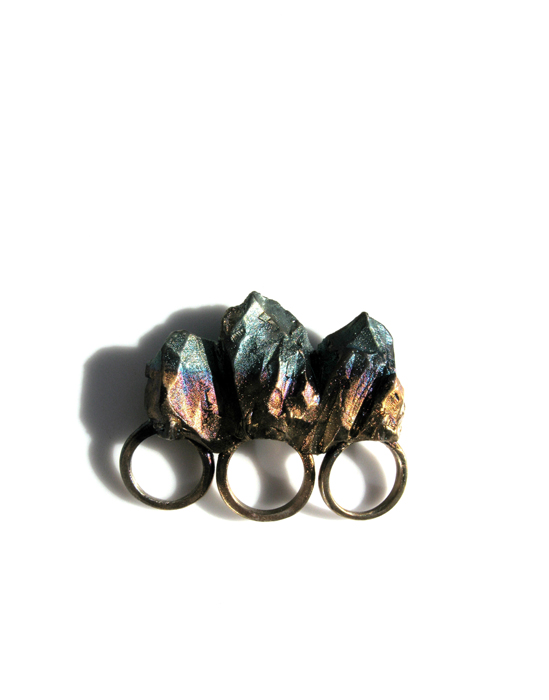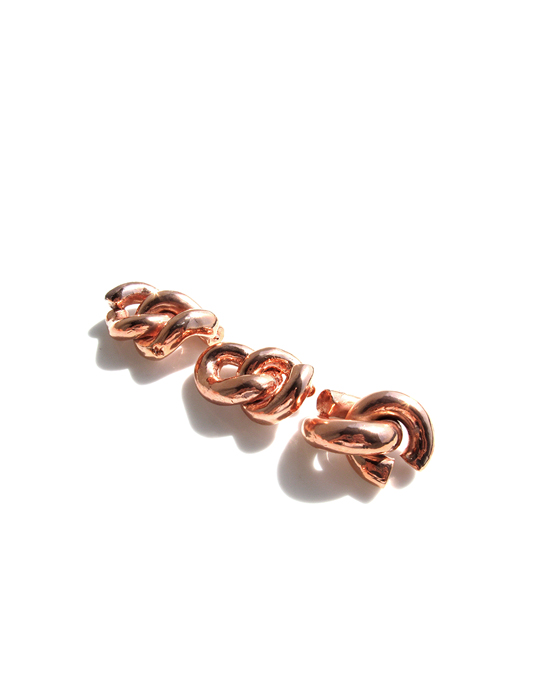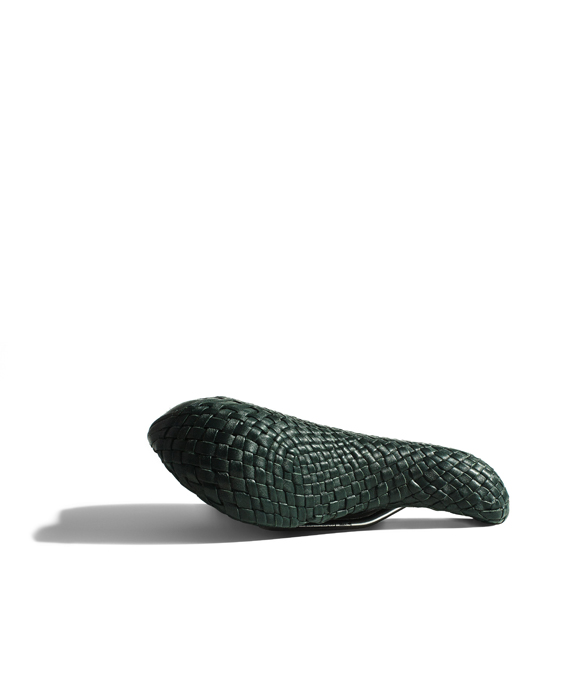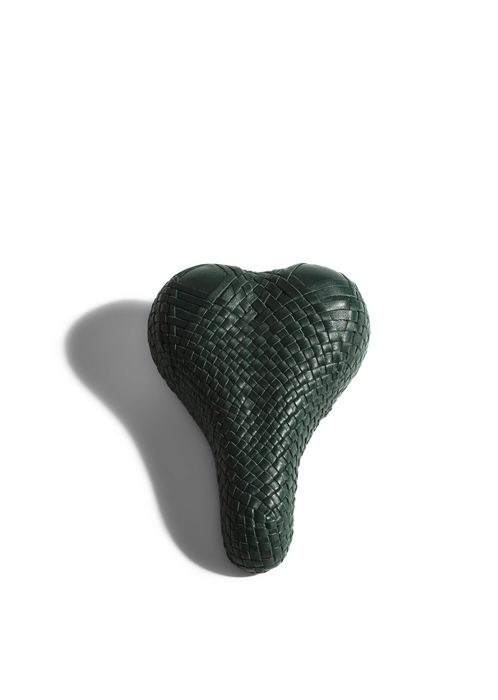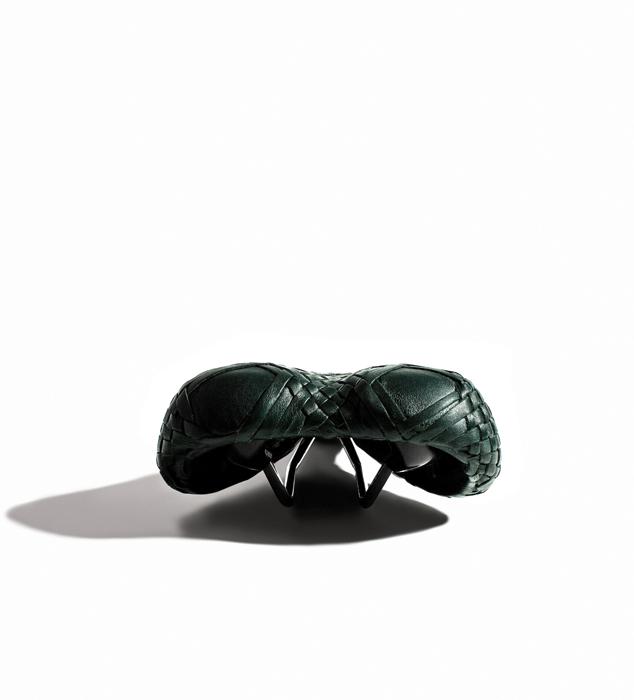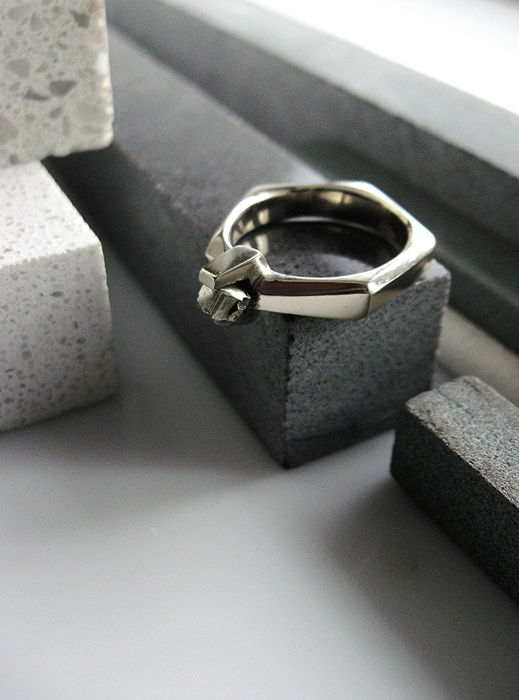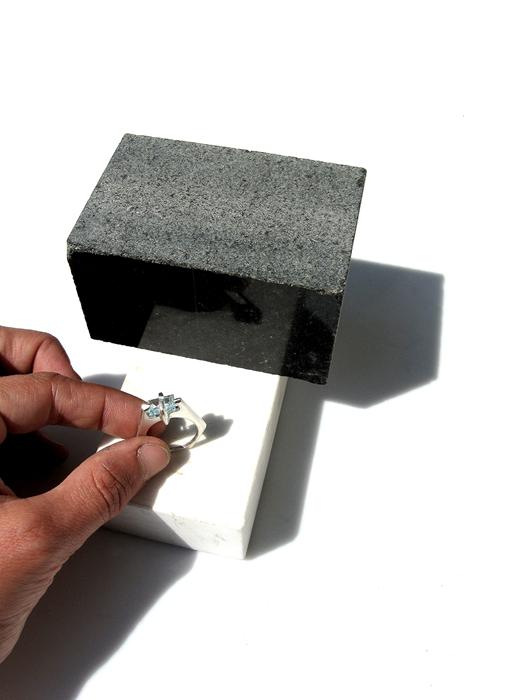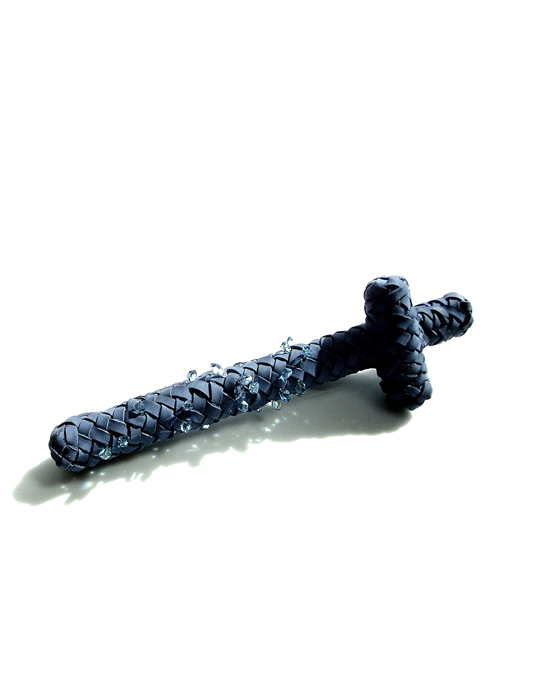Neva Balnikova — New East 100
Neva Balnikova started her eponymous Sofia-based jewellery brand in 2008 with an unworldly first collection. Her style has evolved since then, with the designer now taking her inspiration from things closer to home, her cultural surroundings and the rawness of nature. Interested in organic and oversize forms, her signature pieces include bracelets, rings, brooches and necklaces, as well as everyday objects. In fact, Balnikova celebrates the unrefined and everyday: her jewellery doesn’t dress itself up as something more, while still being experimental and innovative. We spoke to the Bulgarian designer about her journey in jewellery making, her native Bulgaria and transforming the everyday into the spectacular.
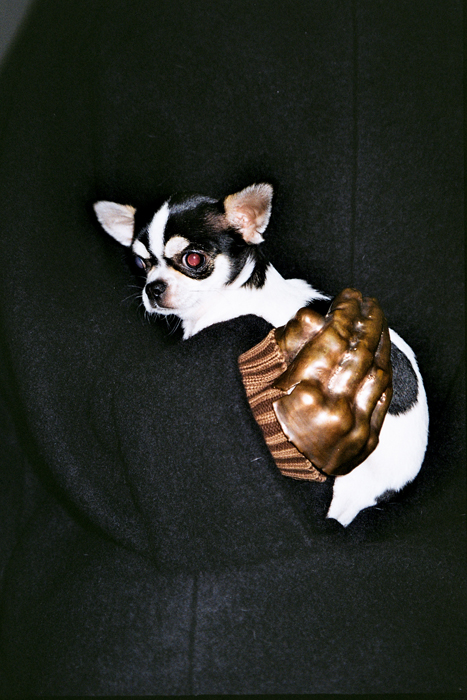
Where are you from?
I am from Sofia, Bulgaria. My studio is based on the top of a building, with the best city view.
Did you have any formal training in jewellery design?
It started as a hobby. I would make simple jewellery in my childhood — just out of beads and string and such. As I got older I decided that I needed to learn more specialist jewellery making skills and began by practising in the studio of jewellery designer Nikolay Sardamov.
What was your relationship to jewellery before you started designing?
I’m not sure when exactly it was but I remember at some point I began paying attention to the jewellery on my mother’s neck or on a friend’s hand. They had some pieces that caught my eye and played on my mind.
What kind of jewellery are you drawn to?
I like body adornments, pieces that can fit well with the body. I am also inspired by architecture and machines.
Can you describe your first ever collection? How has your practice changed over the years?
My first collection consisted of ten brooches resembling alien seafood, after I played around with small pieces of generic toys. Over the years, I have learned that the best way to use my skills is to combine forms and materials intuitively.
Are there any materials and techniques you always return to?
In my work I often use the electroforming process, leather knitting, and metal casting. My approach is to work with a large form and cut it down or, conversely, to start from a blank slate and create a new form while in motion, during the process.
You often collaborate with other jewellers and artists. Is there a particular collaboration that has pushed you to make something out of the ordinary?
I really enjoy working with different mediums. I love converting the material value of a piece into something more artistic, of greater value and more vitality. I collaborated with painter and illustrator Hristo Savov / Ico Ptico to visualise the process of jewellery design. He drew a total of 33 sketches, illustrating everything from the chaos of the studio down to the finished product. These sketches of daily life showed the demanding process of bringing a product to perfection and gave me a new way to observe objects.
Your designs are not always recognisable as jewellery. Moreover, you’ve also designed objects such as umbrellas, saddles, ping pong paddles. How does this reflect your understanding of what jewellery should be?
Jewellery making has given me a new way of thinking: I’ve learned that beautification can simply be the transformation of an everyday object that we no longer notice, which has become old and ugly through use. By transforming it in this way you are paying your respect to that thing which has served you every day. It’s funny because now my clients are asking me to transform their old headphones, their hand grips and other strange items, to make them look spectacular.
Are there are particular jewellery trends specific to Bulgaria?
We have a really great scene of contemporary jewellery designers, all with diverse skills, who are always experimenting with the craft. As for old trends, filigree is really beautiful, as well as pieces made with beads, which takes great craftsmanship and patience.
How does your native Bulgaria influence your work?
By making me more flexible. Our culture is ornamental and decorative, full of mosaic colours and materials that are deeply connected to our cultural history. I love learning more about it and I am now looking into how old techniques can be mixed with more contemporary processes to make something unexpected.
What is the story behind your most recent collection?
The last collection was called LINK ME UP and it consisted of pendants, bracelets, and necklaces, all in fluid form, produced in copper and silver. It was inspired by chains in industrial and everyday usage, seeing them as small objects consisting of two links or just as the beginning of the form.
Text: Liza Premiyak
